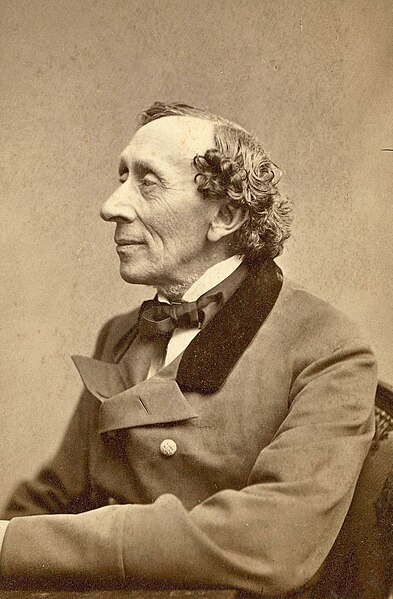Adam Gottlob Oehlenschläger was a Danish poet and playwright. He introduced romanticism into Danish literature. He wrote the lyrics to the song Der er et yndigt land, which is one of the national anthems of Denmark.
Portrait of Adam Oehlenschläger by Christian Albrecht Jensen (1825)
Statue of Adam Gottlob Oehlenschläger in Frederiksberg Gardens (Copenhagen)
Adam Oehlenschläger statue in front of the Royal Theater, Copenhagen, by H. W. Bissen, 1861
Oehlenschläger crowned with laurel by Tegner at Lund Cathedral by Constantin Hansen (1866)
Danish literature stretches back to the Middle Ages. The earliest preserved texts from Denmark are runic inscriptions on memorial stones and other objects, some of which contain short poems in alliterative verse. In the late 12th century Saxo Grammaticus wrote Gesta Danorum. During the 16th century, the Lutheran Reformation came to Denmark. During this era, Christiern Pedersen translated the New Testament into Danish and Thomas Kingo composed hymns. Fine poetry was created in the early 17th century by Anders Arrebo (1587–1637). The challenges faced during Denmark's absolute monarchy in 1660 are chronicled in Jammersminde by Leonora Christina of the Blue Tower. Ludvig Holberg (1684–1754), influenced by the ideas of the Enlightenment and Humanism, is considered the founder of modern Danish and Norwegian literature. Neoclassical poetry, drama, and the essay flourished during the 18th century influenced by French and English trends. German influence is seen in the verse of the leading poets of the late 18th century such as Johannes Ewald and Jens Baggesen. Other 18th century writers include the hymn writer Hans Adolph Brorson and the satirical poet Johan Herman Wessel.

Hans Christian Andersen (1805–1875)
The runestones at Jelling
Thomas Kingo (1634–1703)
Ludvig Holberg (1684–1754) painted by Jørgen Roed








